The King's table: what the royal family will eat this Christmas
A right royal gathering
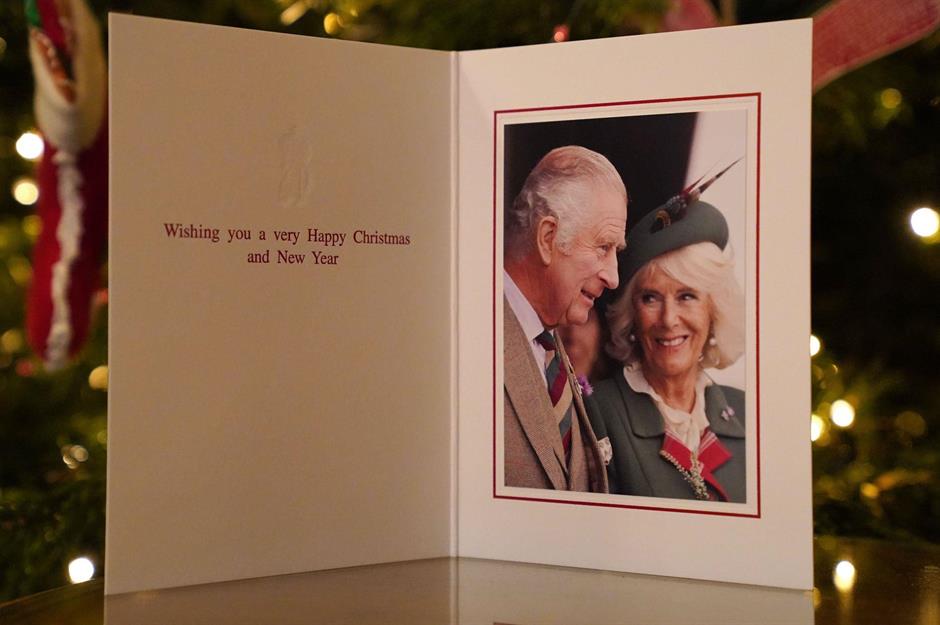
Like many families around the world, the British royals have their own set of special Christmas customs. Very soon the Windsors will be gathering together at Sandringham Estate for their annual celebrations – a tradition that King Charles III has been keen to uphold since the death of his mother, Queen Elizabeth II. Last year he made a few changes to the usual festivities, including the ingredients for Christmas dinner and the guest list. Here, we delve into what Christmas 2023 will look like for the royals.
Click or scroll on to discover what the Windsors will be eating this year, plus our pick of the most incredible royal feasts of Christmases past.
Family fun and feasting
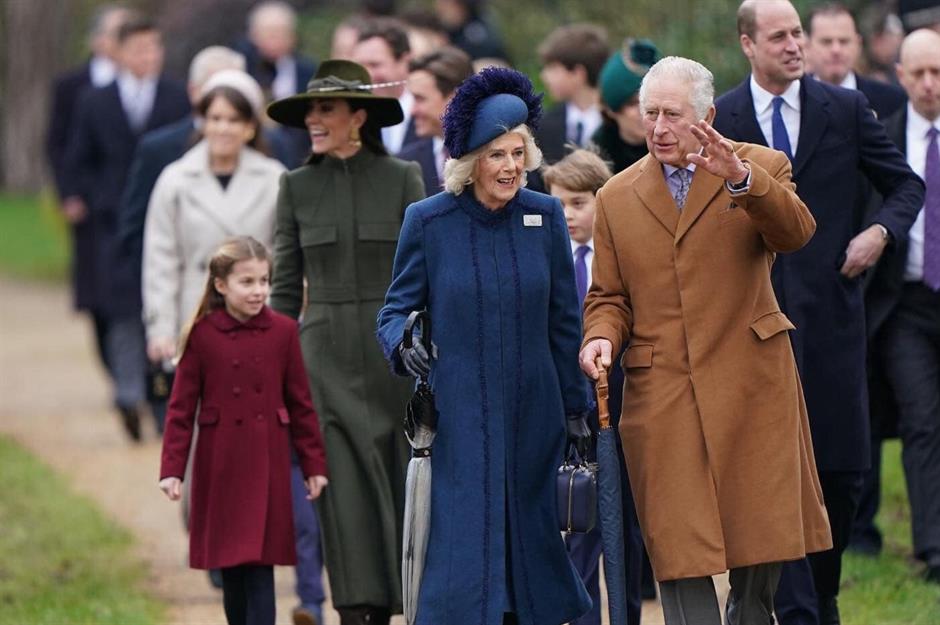
Hosting his second Christmas as monarch at the 19th-century Sandringham Estate in Norfolk, the King – pictured last year with Queen Camilla, the Prince and Princess of Wales and kids – will make sure it’s a fun-filled day for his family. One of the major changes Charles made to his mother’s traditional Christmas celebration was to make it less formal, avoiding the strict royal protocols that have usually been followed on the holiday. This is set to continue, as royal expert Jennie Bond told woman&home: “Christmas for the Royal family under his reign is likely to be a slightly more relaxed and boisterous affair than in the time of the late Queen.”
Organic feast
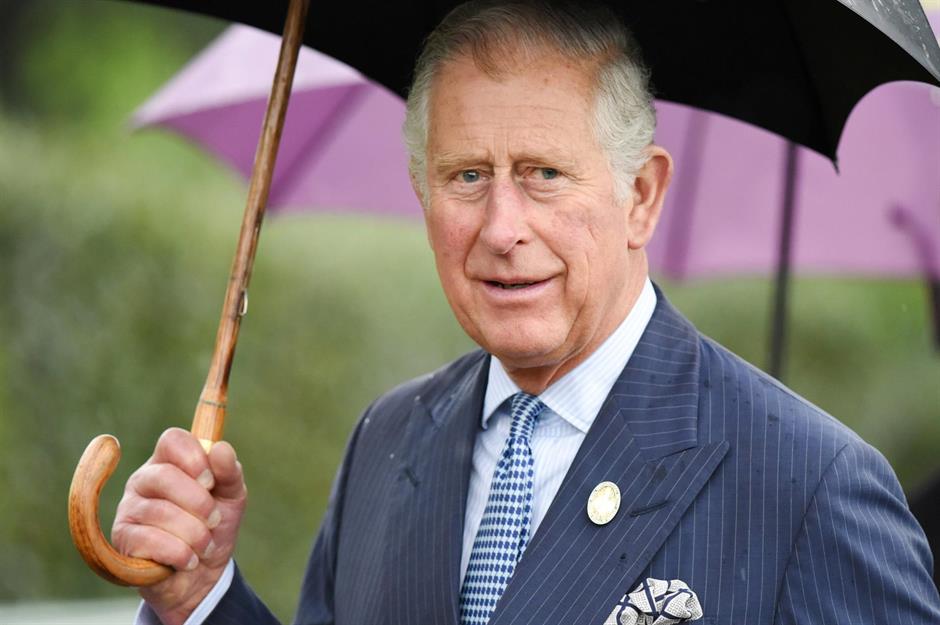
As for the food, a more organic feast is to be expected. Known for championing organic produce, we can expect the menu for His Majesty to be packed with natural and locally grown goods, as it was in 2022. King Charles took over the management of Sandringham Estate back in 2017, and has since aimed to turn the estate fully organic.
A black-tie affair
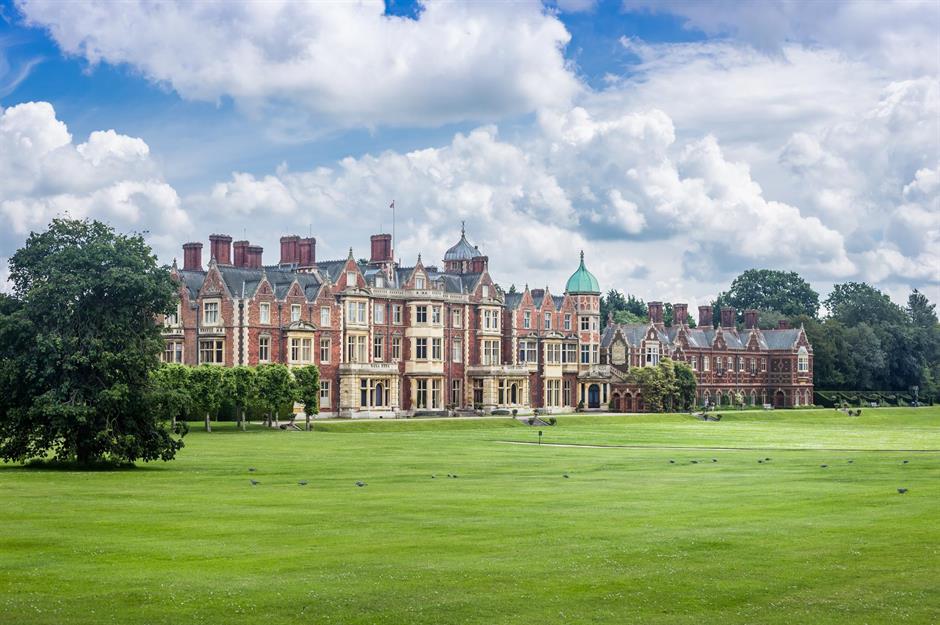
Like many of us, the royals like to start the festivities early on Christmas Eve, with the various members of the family arriving at Sandringham (pictured) throughout the day. But rather than sharing a few drinks and nibbles like the rest of us, the Windsors traditionally have a grand multi-course black-tie dinner. The meal starts with the exchange of presents, followed by a series of decadent dishes served from silver platters. Although King Charles is known to favour more laid-back celebrations, the legendary Christmas Eve dinner is still likely to be an opulent affair.
Traditional turkey dinner
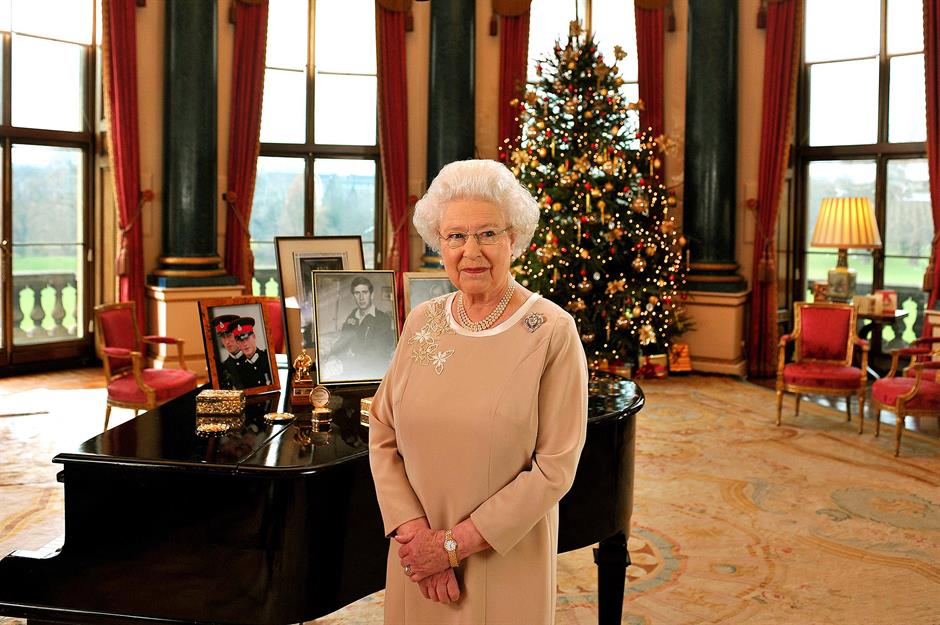
It is, however, expected that the King will honour tradition when it comes to the main event. A Sandringham feast traditionally kicks off with a shrimp or lobster salad starter. In previous years, Queen Elizabeth II's household served three turkey meals – a trio of birds for the adults, one served to the children in the nursery, and more for the staff. The sides have been classic, too, with roast and mashed potatoes, Brussels sprouts, carrots, parsnip and stuffing gracing the table. To finish, Christmas pudding with brandy butter was always the go-to.
A greener Christmas
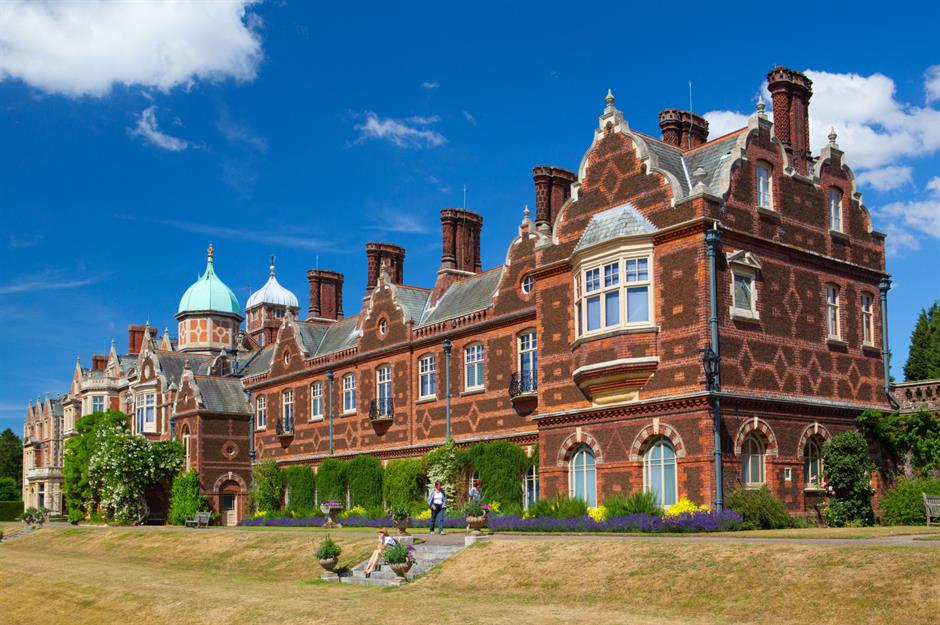
In a 2021 interview with Country Life magazine, Charles spoke passionately about the ethos behind his commitment to organic. "It has always seemed to me somewhat logical to embrace a farming system that works with nature and not against her," he said. To tie in with his 75th birthday celebrations in November 2023, King Charles launched The Coronation Food Project, a new campaign to tackle issues of food waste and poverty.
Who's invited – and who isn't
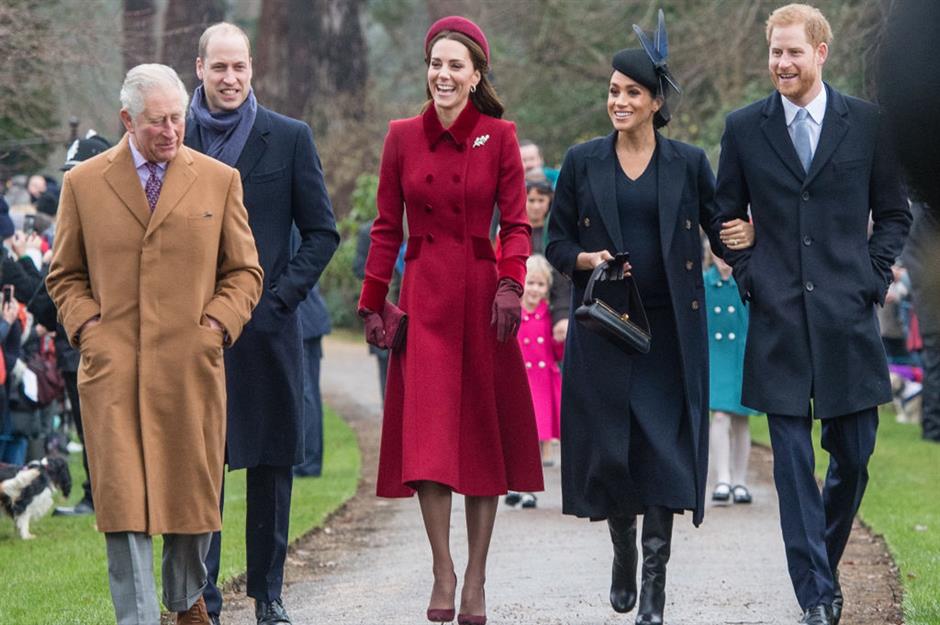
The guest list for this year's banquet is yet to be confirmed, with many anticipating that Harry and Meghan will not be joining the celebrations as tensions continue to be fraught. However, after news reports that the King desperately wants to see his grandchildren, there’s still a possibility that the family will come together for Christmas. This photo shows the Duke and Duchess of Sussex attending church on Christmas Day 2018 with Charles, William and Kate. A less controversial update to the guest list is the addition of Queen Camilla’s children and grandchildren, who will be joining the royals for the first time.
Christmas with friends
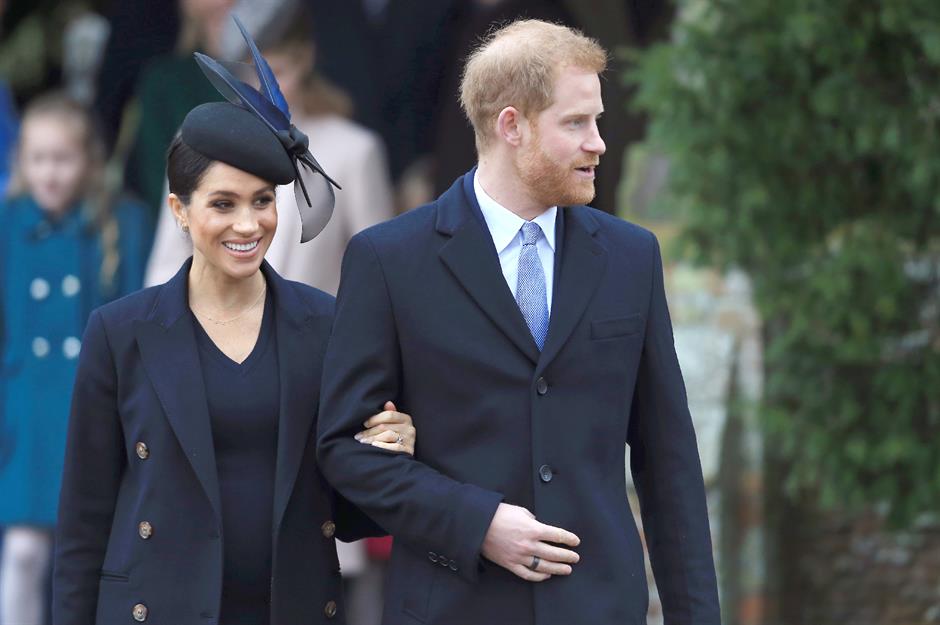
The Duchess of Sussex, Meghan Markle, has spent two Christmases with the royal family. While she has enjoyed the indulgent Sandringham banquet, her own traditions have historically been rather different. In a 2015 interview with Grazia, a year before meeting Prince Harry, Meghan spoke of her love of dining with friends over Christmas, and revealed her penchant for innovative side dishes. She shared her festive recipe for maple-glazed sweet potato wedges: hunks of potato tossed in lemon juice, maple syrup and cayenne pepper, then baked until fluffy and crisp.
Meghan's festive tipples
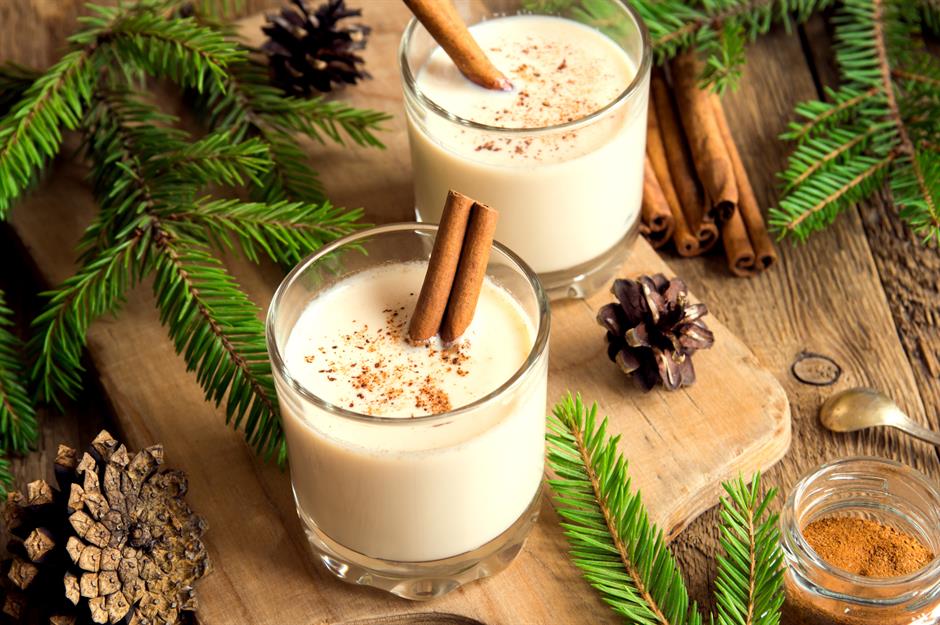
Meghan also shared her favourite festive cocktail with Grazia. The Duchess of Sussex is partial to an almond milk spiced cocktail, which she would make for friends over the holiday period. Her festive recipe sees almond milk blended with dates and spices including cinnamon and nutmeg – the mixture is then shaken or heated through with bourbon and finished with a cinnamon stick.
Read on for royal feasts of Christmases past, from medieval courts to how the late Queen Elizabeth II's festive traditions are being continued to this day.
A meaty medieval feast
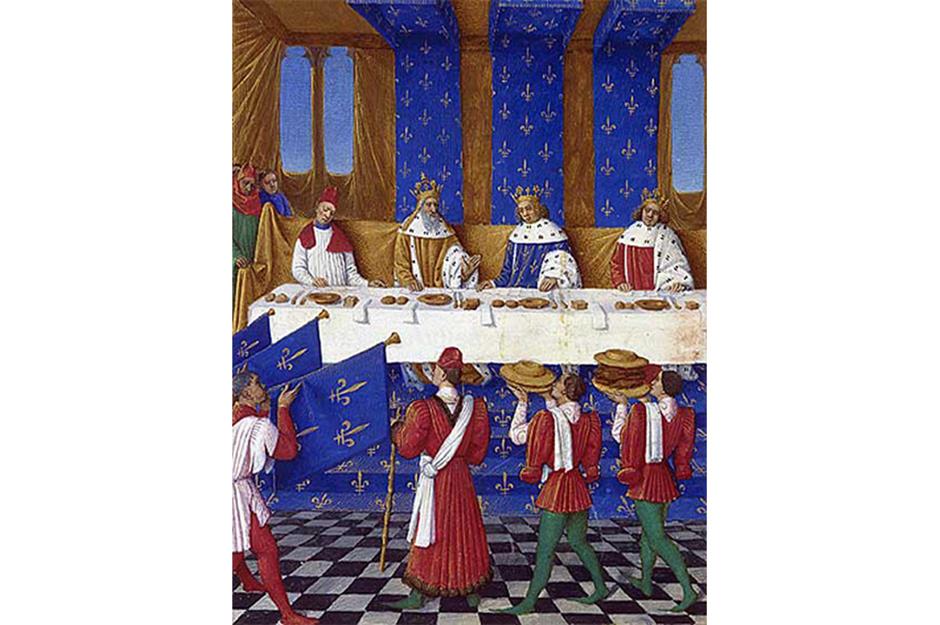
In the early Middle Ages, Christmas played second fiddle to Epiphany, a religious festival celebrating the Three Wise Men who visited Jesus, and 25 December passed with little feasting. This changed during the 11th century, especially under the reign of William the Conqueror, who chose Christmas Day for his coronation date. From then on, Christmas in the royal court would be celebrated with a lavish, meat-heavy banquet that would shape royal foodie traditions for years to come.
A bedecked boar's head
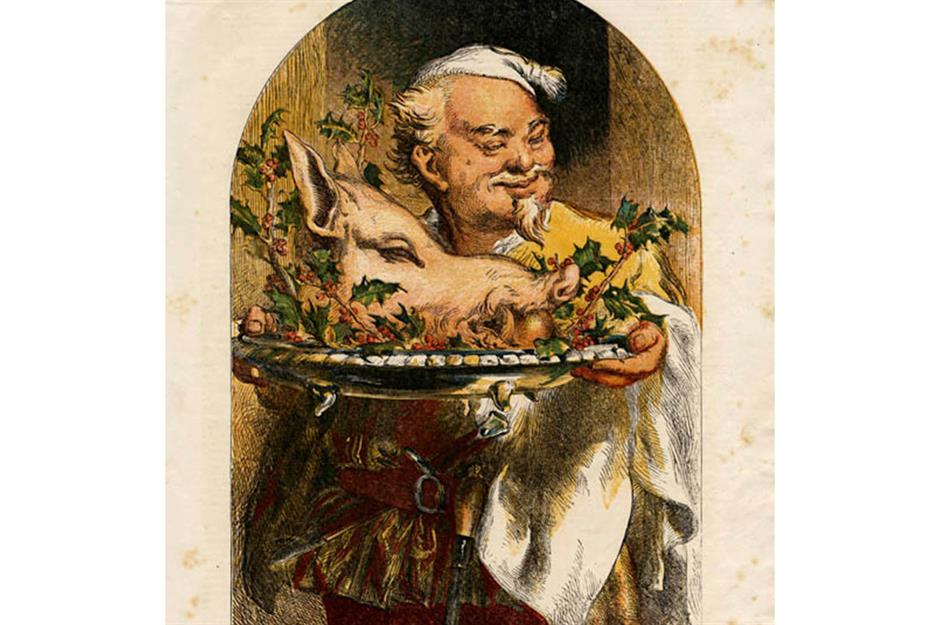
The most enduring of all medieval royal Christmas dishes was a decorated boar's head, still often seen at the banquet table of the modern royals. A striking sight, it would have been one of the dining table centrepieces. The boar's head was stuffed, most often with pork meat, ox tongue, apples and herbs, then garnished with holly and set on an ornate platter.
A peacock on a platter
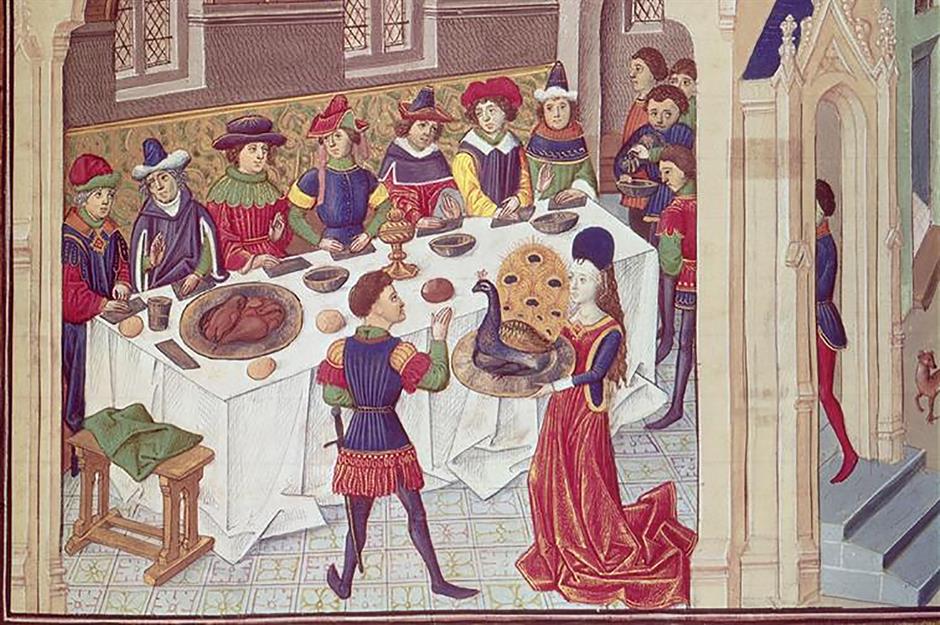
Peacock was the most elaborate dish of all. After the bird was roasted, its beak would be gilded and its feathers fanned and arranged on a decorative platter, as if it were still alive. A knight would be chosen to carve the meat, not before making a 'peacock vow'. The man would lay his hand on the plumage and pledge some noble deed. An early version of mince pies would also grace the medieval dining table; these were rectangular to represent Jesus' manger and were filled with meat and spices.
The Tudor pie

By the beginning of the Tudor era in the late 1400s, food was central to a royal Christmas. The most significant festive dish, enjoyed by the likes of Henry VII and Henry VIII (pictured), was a gargantuan Christmas pie. The thick pastry case, then called a coffin, would have been filled with a choice of meats held together like Russian nesting dolls: turkey was stuffed with goose, which was stuffed with chicken and pigeon and partridge, before being baked into the pie.
The first sign of turkey
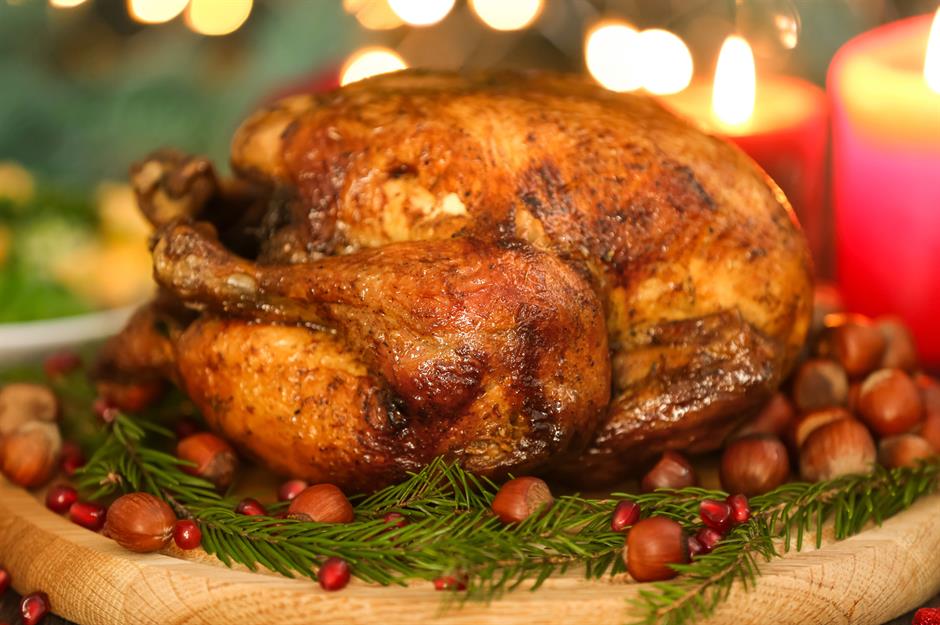
Henry VIII was purportedly also the first monarch to serve a turkey as part of the Christmas feast. The meat arrived in England in the 1500s, during Henry's rule, and was gaining in popularity. At this point though, peacock, swan and the ornamental boar's head still took centre stage on the festive dining table.
The wassail bowl
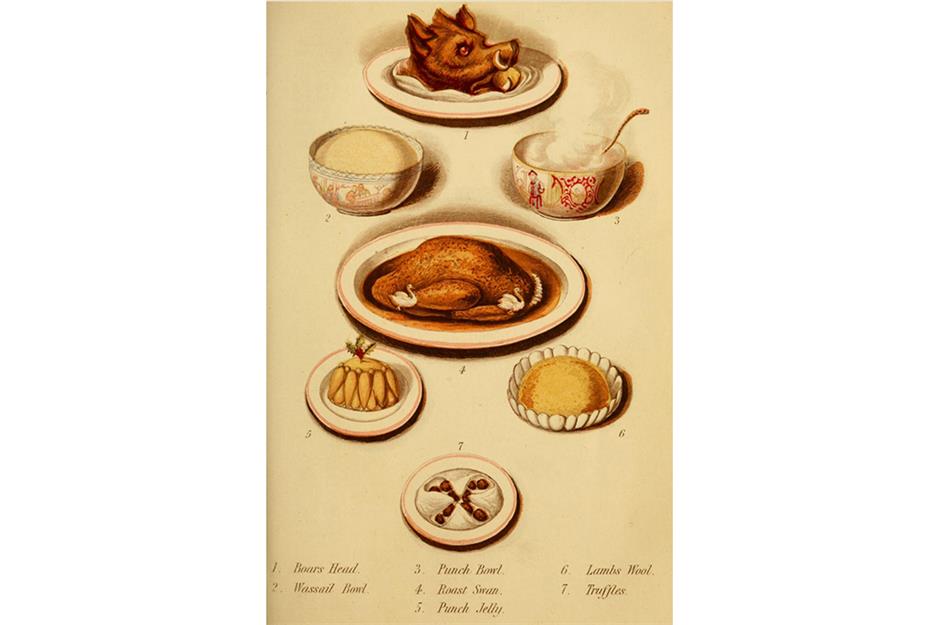
A wassail bowl, which had its roots in medieval England, was also a feature of Tudor Christmases. Honey and warming spices such as cloves and ginger would be added to mulled ale to make the wassail, which was sometimes nicknamed 'lambswool' for its frothy appearance. The drink was served in a large bowl, often made from silver or pewter, and passed between the royals and their guests as they toasted their good health.
A sweet-toothed monarch
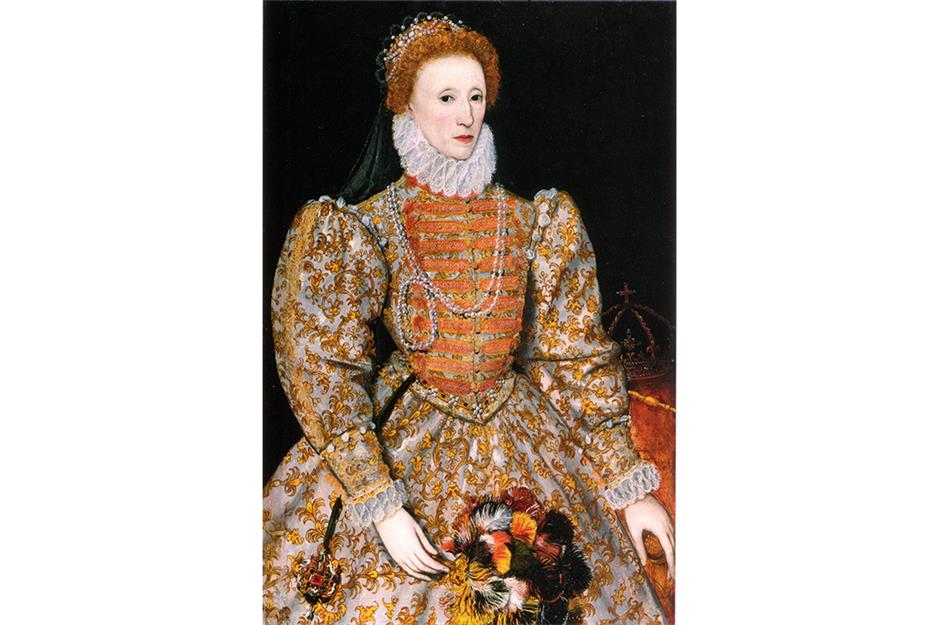
By the time Elizabeth I was on the throne, during the mid-1500s, sugar, which had arrived in Britain in the 1100s, was becoming increasingly popular among the upper realms of society. It was incredibly expensive and used as a symbol of status. Naturally, it became an important fixture of the royal Elizabethans' festive menu.
The sugar-coated Elizabethan Christmas
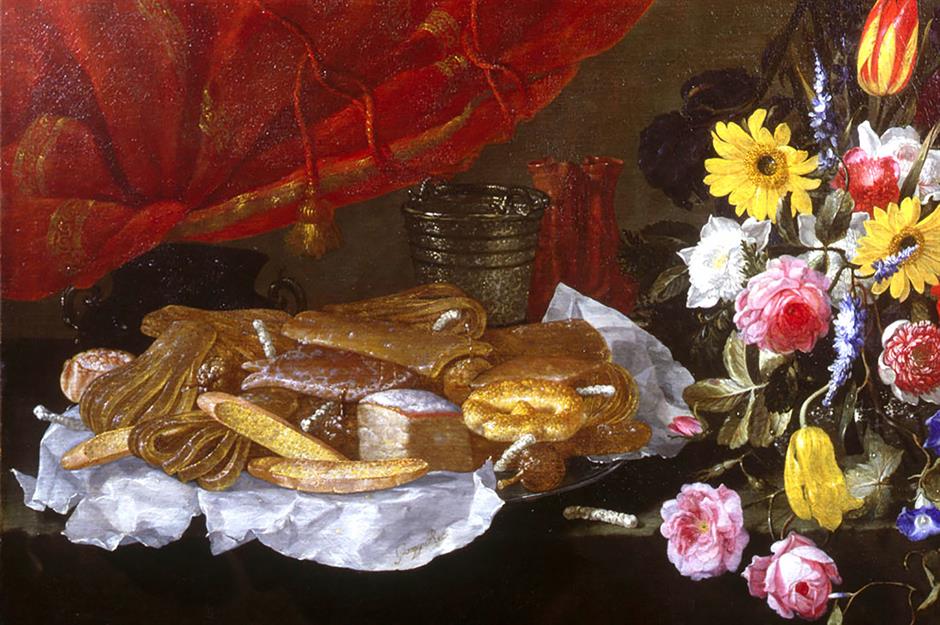
Sweetmeats (pictured), prized as much for their pleasing aesthetics as their sugary taste, became a key part of royal banquets and festive celebrations. One of the most popular sweets was 'leech'. Made of milk, rosewater and, of course, sugar, it was moulded into a variety of imaginative shapes. The royal Elizabethans didn't stop there, though. Hunks of bacon were also cooked with almonds and sugar, and the sweet stuff was also used to flavour vegetables.
The Georgians' low-key menu
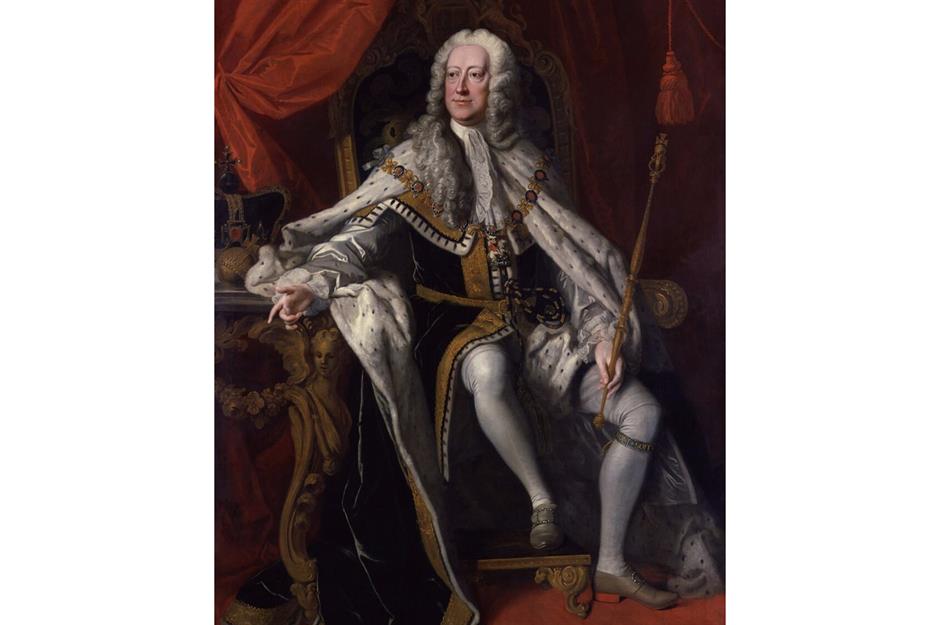
Fast-forward to the Georgian era and preserved Christmas menus show King George II (pictured) had all but done away with the boar's head and the bounty of sweet treats. In its place was a more pared-back menu, though one that would still delight carnivores. Shortly after the death of Queen Caroline, records show that a widowed King George dined on squabs, chicken fricassee and cold turkey, followed with warm plum broth and mince pies.
Victorian-sized portions
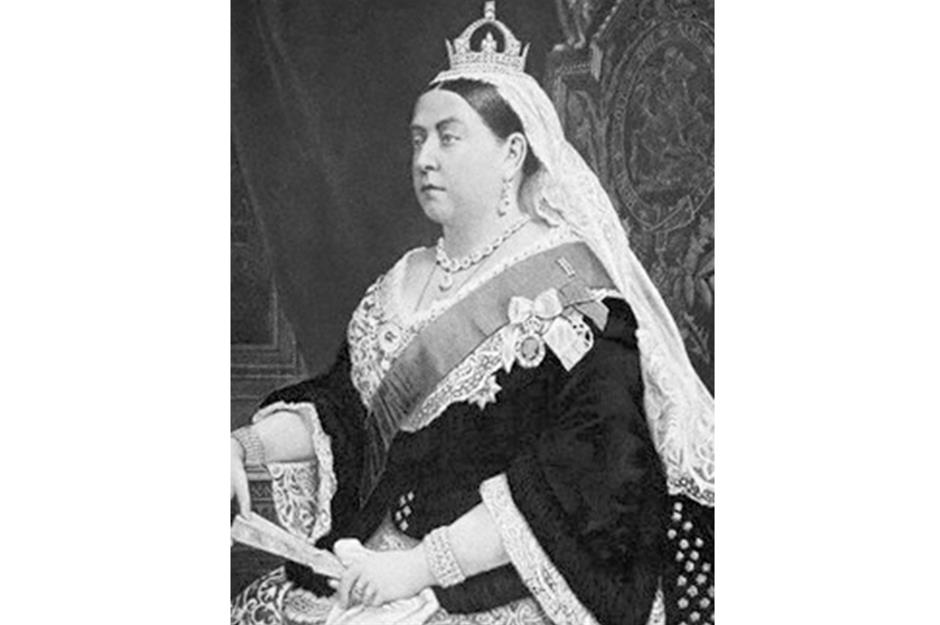
During the Victorian era, all the splendour returned to the royal Christmas dinner. Size mattered to Queen Victoria (1837-1901), and the festive menu was enormous and elaborate. A gigantic baron of beef, reared on the Queen's own estate, would take pride of place on the table. It was joined by the traditional boar's head, a mighty game pie and a huge plum pudding for dessert.
The makings of the modern mince pie
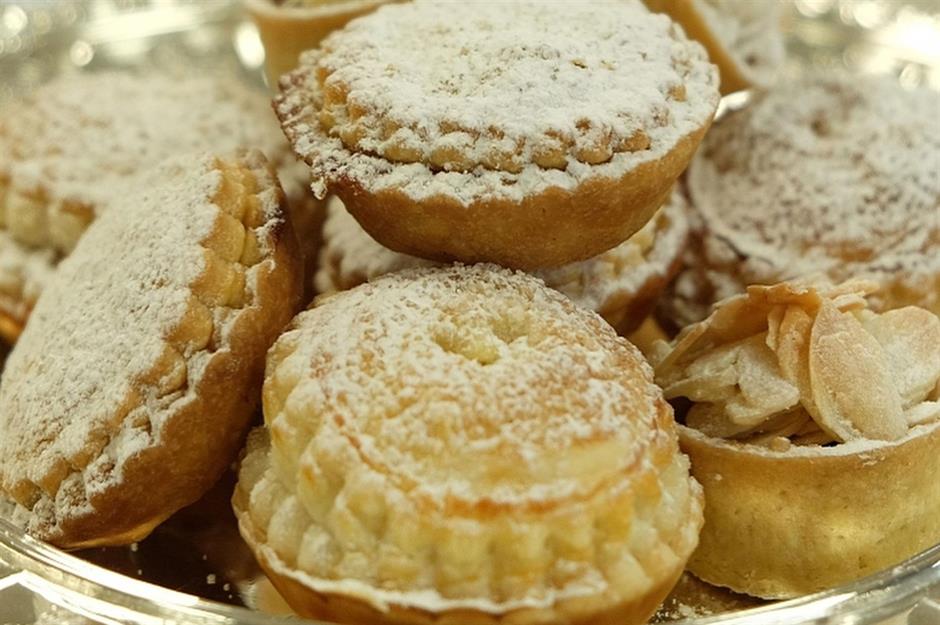
During Queen Victoria's rule, a festive foodie favourite underwent a makeover. Until this point in history, the mince pies on royal dining tables were filled with real meat, often mutton or minced pork, plus suet and the usual fruit and spices. However, in the 1800s, versions without meat, padded out with extra fruit, became popular with the upper classes. Eventually this meat-free recipe would become the norm.
Edwardian dining 'à la russe'
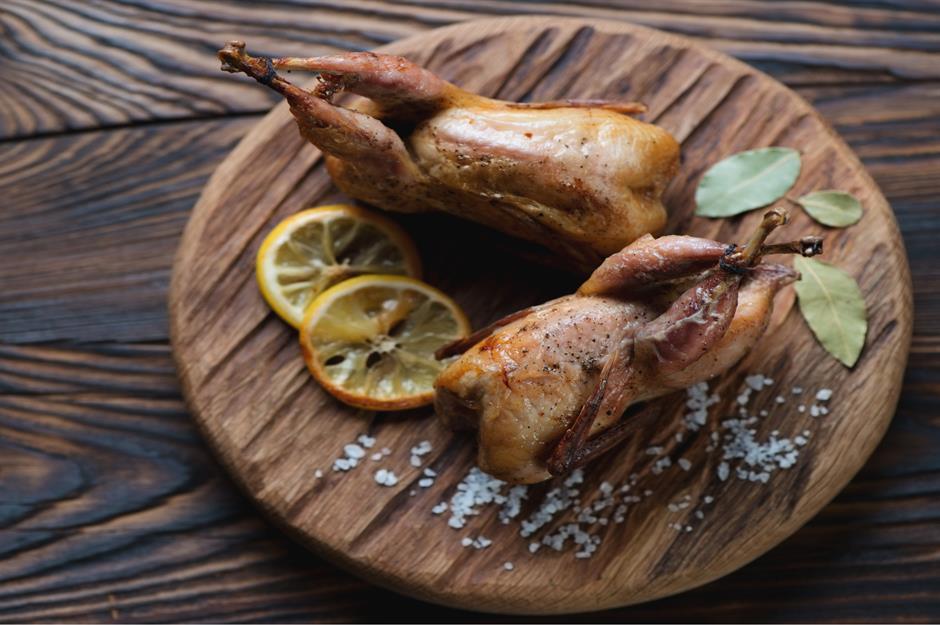
Inspired by the fine dining etiquette of France, King Edward VII (1901-10) eschewed the festive banquet in favour of dining 'à la russe'. Christmas dishes were served one after the other, rather than laid on all at once in a flamboyant display, as had been the previous tradition. Courses at the royal Edwardian dinner table would have included braised ox hearts, roasted quail, mussel jelly and blancmange.
A modern royal Christmas
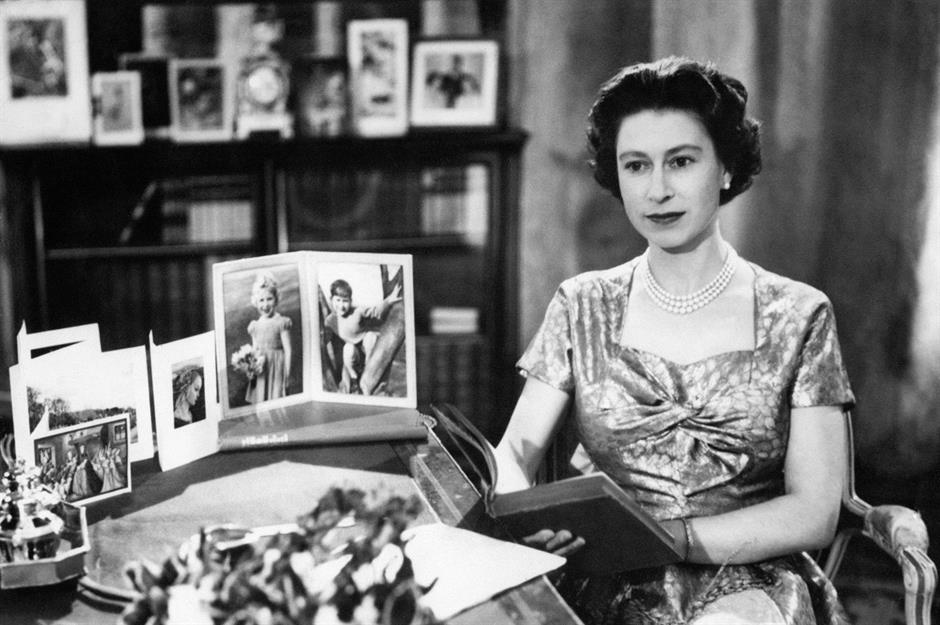
The feast prepared for the Windsors has been heavily influenced by monarchs through the ages. Historic dishes with modern twists were typically served over the Christmas period during Queen Elizabeth II's reign, and the luxury and exuberance of previous eras was retained. Though the royal Christmas is a private event, extensive interviews with former royal chef Darren McGrady in the Daily Mail, Good Housekeeping and Hello! have revealed hidden secrets about the Windsor's festive dining habits.
A family affair
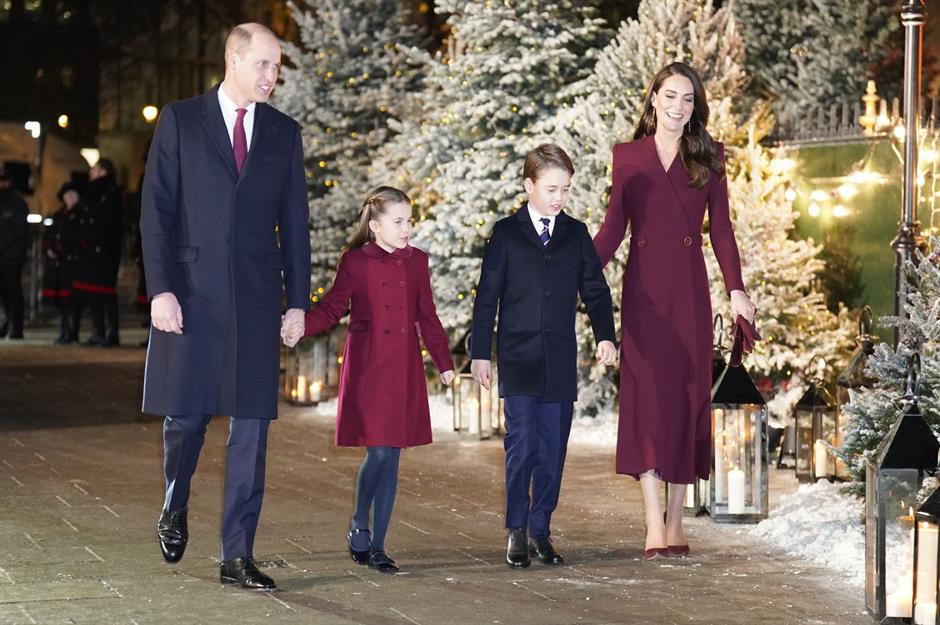
In the past few years, Christmas lunch has typically been a big affair with Charles, Camilla, Kate and William in attendance; Harry and Meghan last joined the festivities in 2018. The family gather at Sandringham Estate in Norfolk for a solid three days of festive eating. So formal and lavish is the dining, from Christmas Eve to Boxing Day, that the royal children are required to dine in the nursery with their nannies, while the adults indulge in a series of meals prepared by hundreds of staff.
The Christmas Eve tea
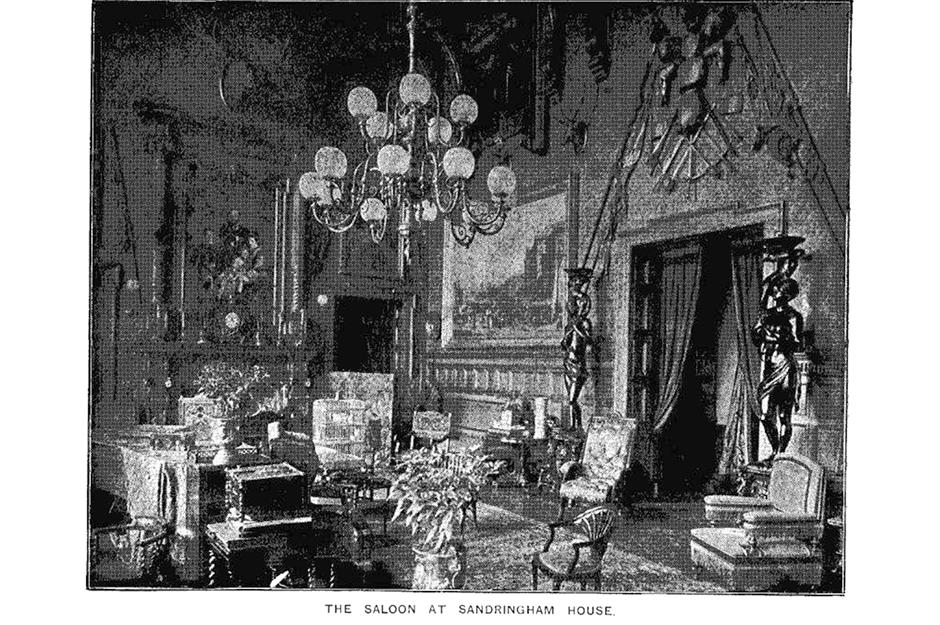
The Christmas Eve tea kicked off the royal festive dining extravaganza. Served in the historic Sandringham Saloon (pictured), where the likes of Queen Victoria would also have dined, it consisted of dainty sandwiches filled with ham, fine cheeses and coronation chicken, served with a steaming pot of Earl Grey tea. To sate the royals' sweet tooth, a gigantic ginger cake would be served (traditional fruit cake was saved for the following day).
The royals' Christmas breakfast

On Christmas Day, the feasting began as soon as the royals woke up. Male family members were known to have a meat-heavy start to the day, with kippers, bacon, grilled kidneys and eggs. The women generally opted for something lighter. Queen Elizabeth was known for having her meal brought directly to her bedroom: she had half a grapefruit, buttered toast and coffee.
The seafood starter
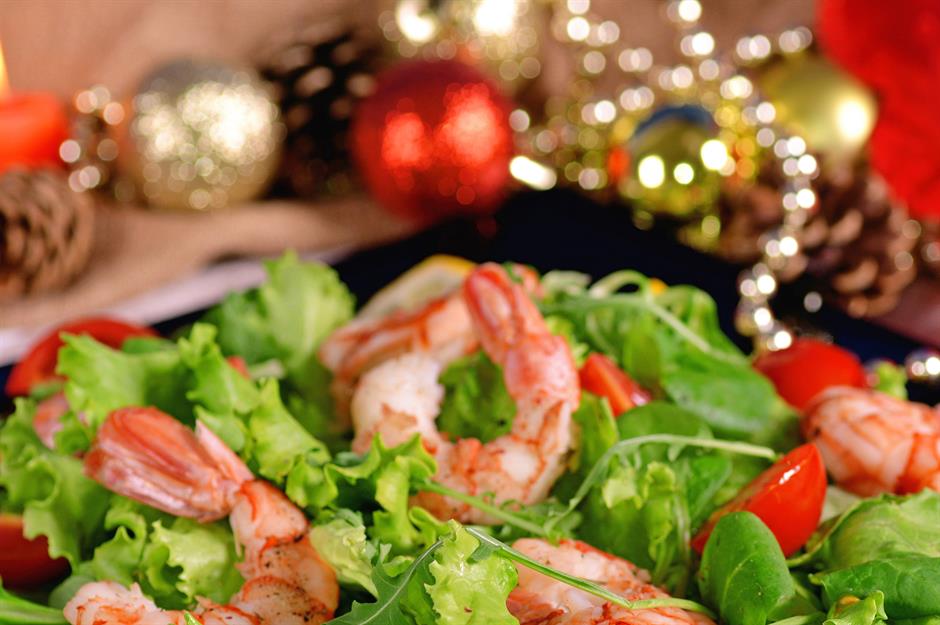
Strung out over several decadent courses, the Christmas lunch was the day's main event. The royals sat at a handsomely decorated dining table and were presented with their starter. The most common offering was a bed of salad topped with juicy shrimp or succulent lobster.
Turkey and all the trimmings
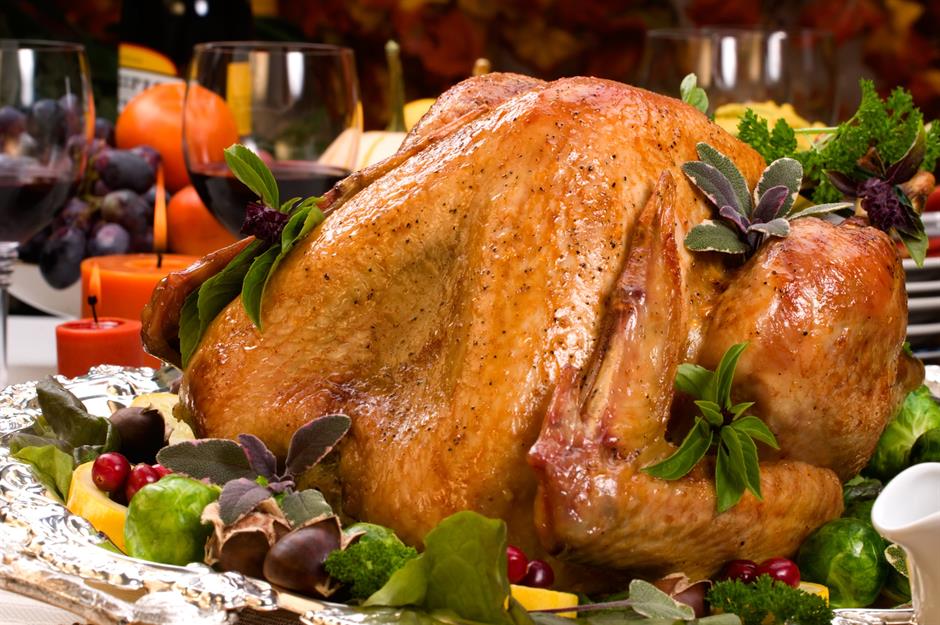
The main event was usually a sumptuous turkey dinner with plenty of fine trimmings. Reportedly a trio of turkeys would be cooked for the royal adults, one for the children's room and some 100 birds prepared for the staff at the estate – a tradition King Charles is expected to keep. The meat was paired with an array of herby stuffings, crisp roast potatoes, fluffy mash and traditional vegetables like Brussels sprouts and carrots. Cranberry and bread sauce plus a generous glug of gravy brought it all together.
A slice of Christmas pud
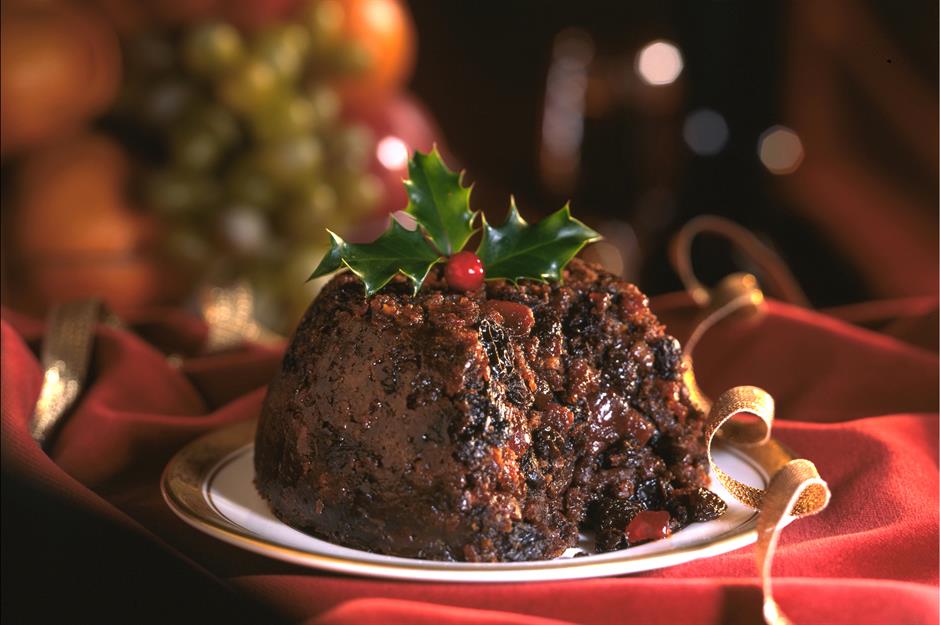
The royals love a sweet treat, too. They plump for a traditional pudding, the preparation of which traditionally began as early as September. Former chef Darren McGrady once revealed that the huge sinks at Buckingham Palace were sterilised and used as enormous mixing bowls to ensure there was enough pudding for everyone. The traditional puddings are rich with sultanas and spices. On the day, the dessert was placed on a platter and bedecked with holly. A palace steward would then serve the pudding, soaking it in brandy and setting it alight.
Stately scones and sandwiches
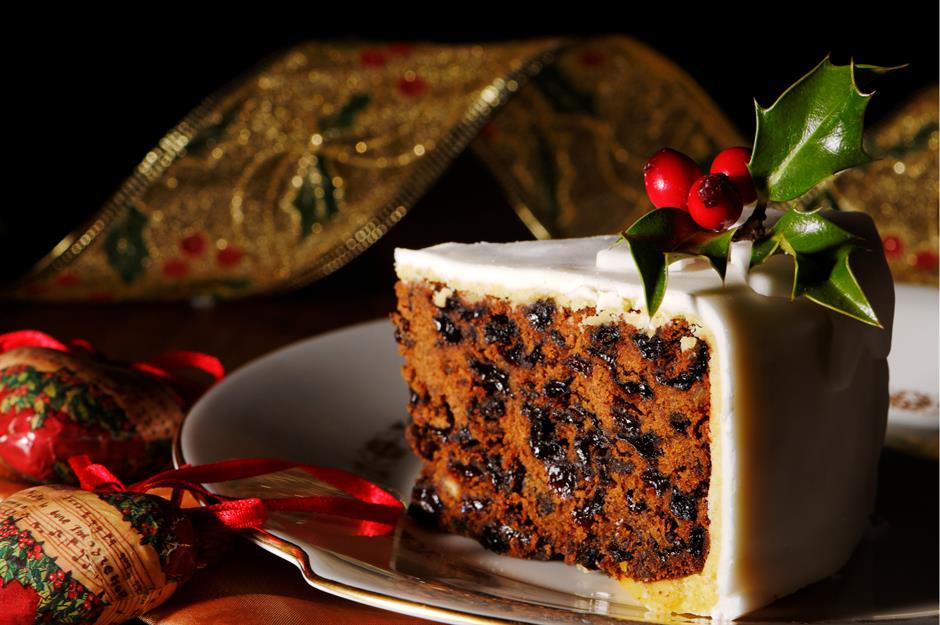
After the Queen made her traditional Christmas speech at 3pm, the other royals would then gather for a festive tea complete with delicate sandwiches and scones. The Christmas cake and chocolate yule log would be served at this time, too.
A sweet treat fit for a queen
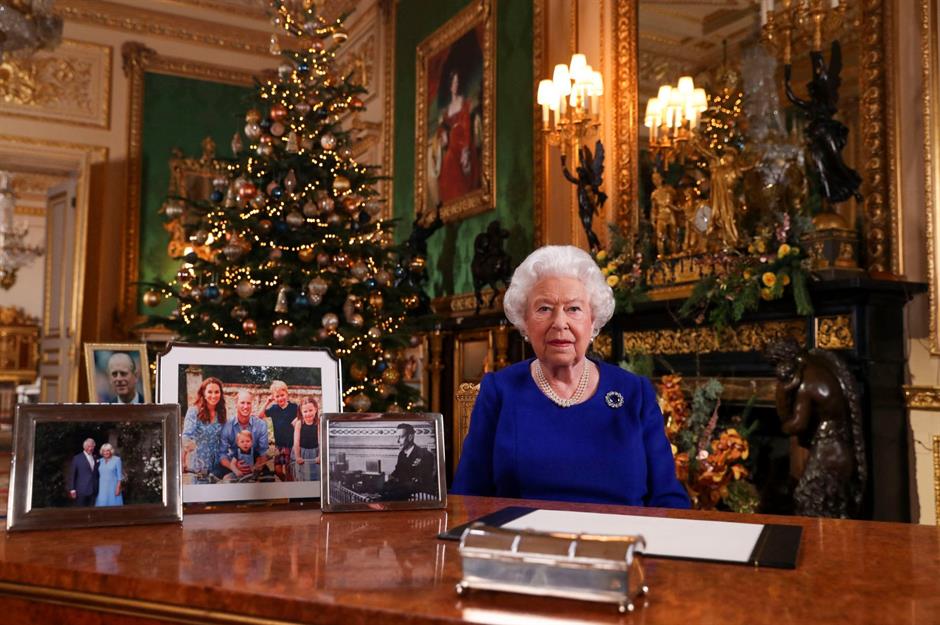
Queen Elizabeth's favourite dessert was chocolate. Former royal chef McGrady revealed that, at Christmas, an entire little table was usually covered with Her Majesty's preferred treats: Bendicks Bittermints. It will be interesting to see whether Kings Charles maintains this particular sweet tradition.
Princess Diana's favourite dessert
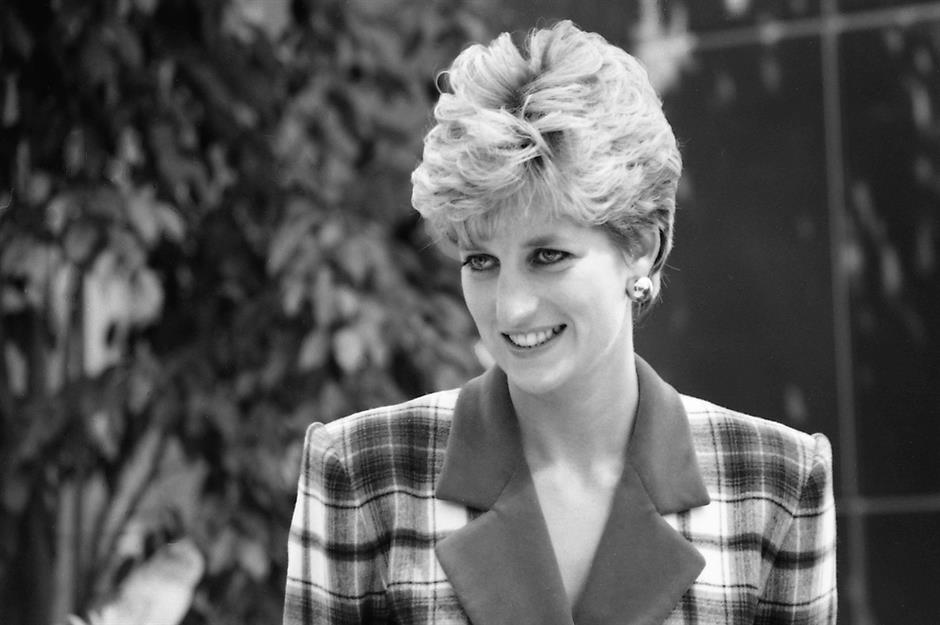
While Queen Elizabeth was a known chocolate lover, the late Diana, Princess of Wales, was more partial to a crêpe soufflé. The thin pancake would often be on the menu for dessert after Christmas lunch, spread with light, zingy apricot jam and dusted in sugar. In interviews, chef Darren McGrady has reported that Diana would often slip into the kitchen to request a second helping of her favourite dessert once service had finished.
Chocolate biscuit cake for Prince William
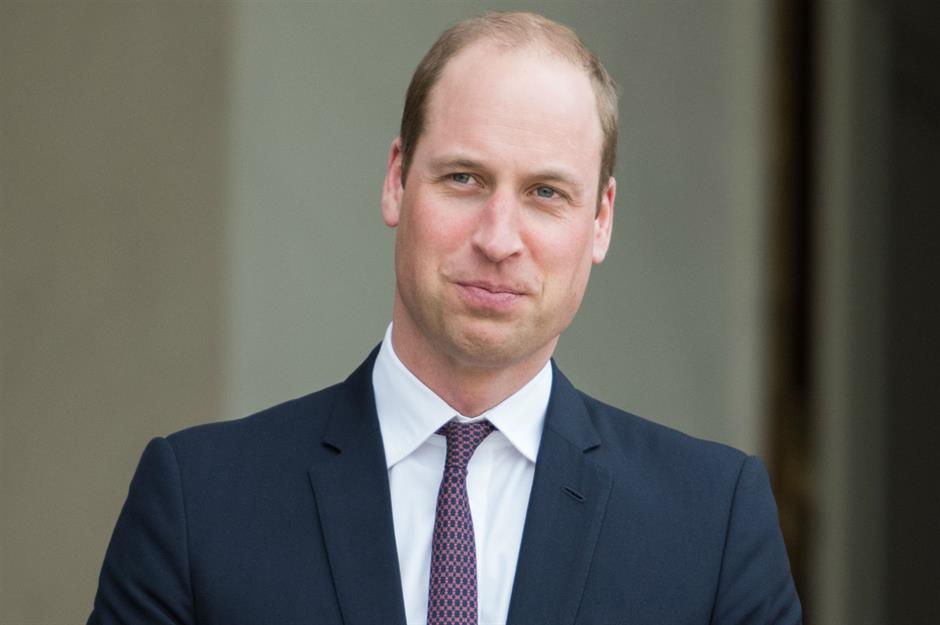
The Prince of Wales apparently favours a chocolate biscuit cake over a yule log. Served during afternoon tea, the cake is heavy, packed full of syrup and Rich Tea biscuits and smothered with a thick layer of chocolate. It's chilled rather than baked. William loves the dessert so much that it was one of his wedding cakes in 2011.
A grand buffet
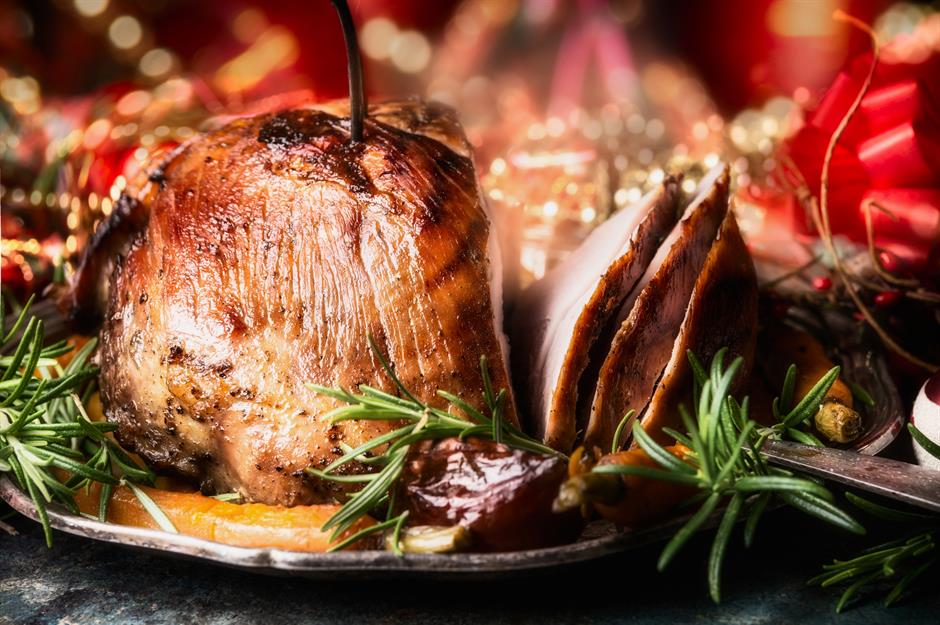
The final feast on 25 December was an elaborate evening buffet. The table was laden with succulent meats such as a decorated ham and often included historic staples such as a stuffed boar's head and ox tongue. For years, foie gras en croute would be served, but we don't expect to see it anytime soon. In 2008, Charles banned the use of foie gras due to concerns about animal cruelty in its production.
A toast to the chef
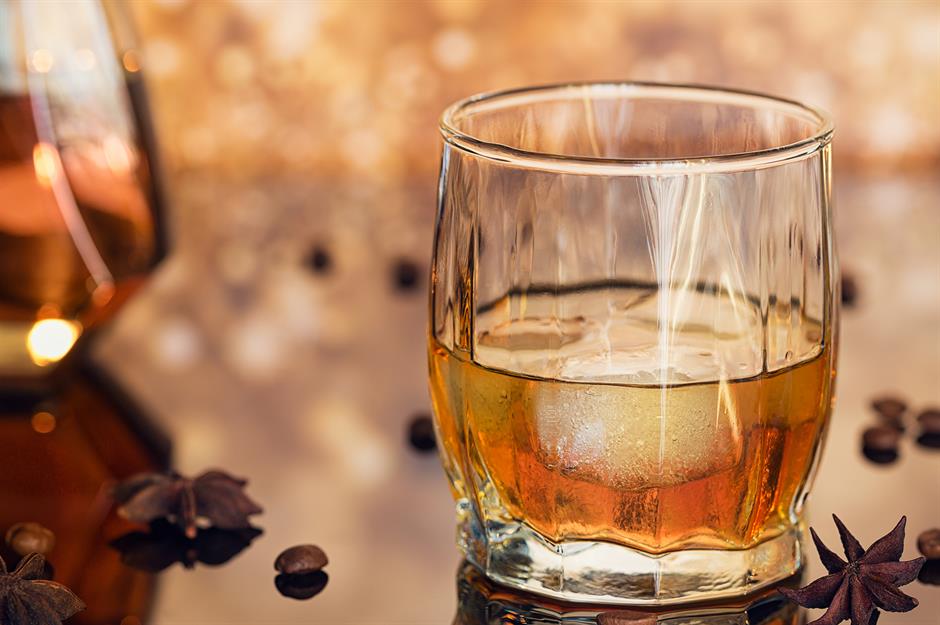
The head chef would enter the dining room for the first time on Christmas Day when the evening banquet was being served. First, he would carve the meat, then he'd be presented with a cold glass of whisky and a toast from Queen Elizabeth II. The chef was thanked for his service over Christmas and the rest of the year before he left the royals to devour the spread.
The final course
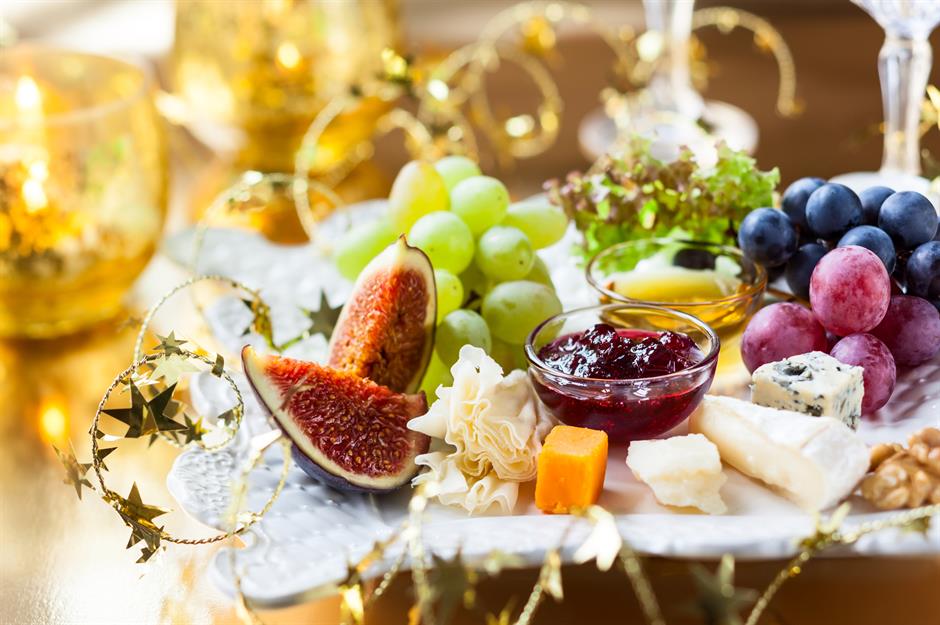
If the meat was the star of the festive food show, then the cheese was a close second. A fan of crackers sat alongside an array of cheeses, from Brie to Cheddar. The highlight was usually a mighty wheel of Stilton, which was pierced and then doused in Port, making it gloriously soft and tangy.
A Boxing Day breakfast
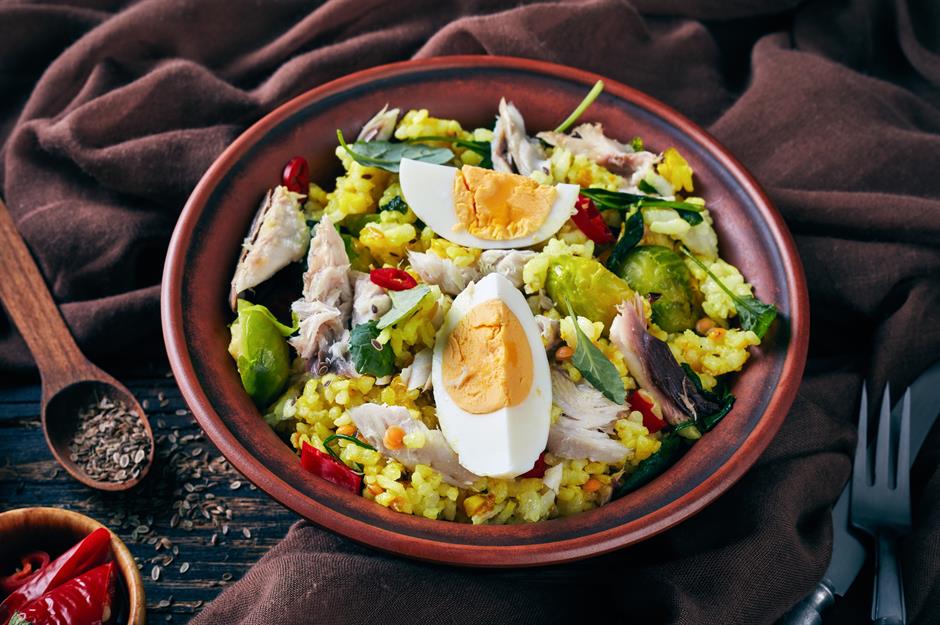
The eating continued on Boxing Day. Having slept off Christmas Day's feast, the male royals would wake for a hearty breakfast ahead of the traditional Boxing Day hunt. According to a source at Sandringham, breakfast usually consisted of bacon, eggs, cereals and toast, as well as kedgeree, a kind of rice dish with smoked haddock, hard-boiled eggs and curry spices.
Lunch in a farmhouse
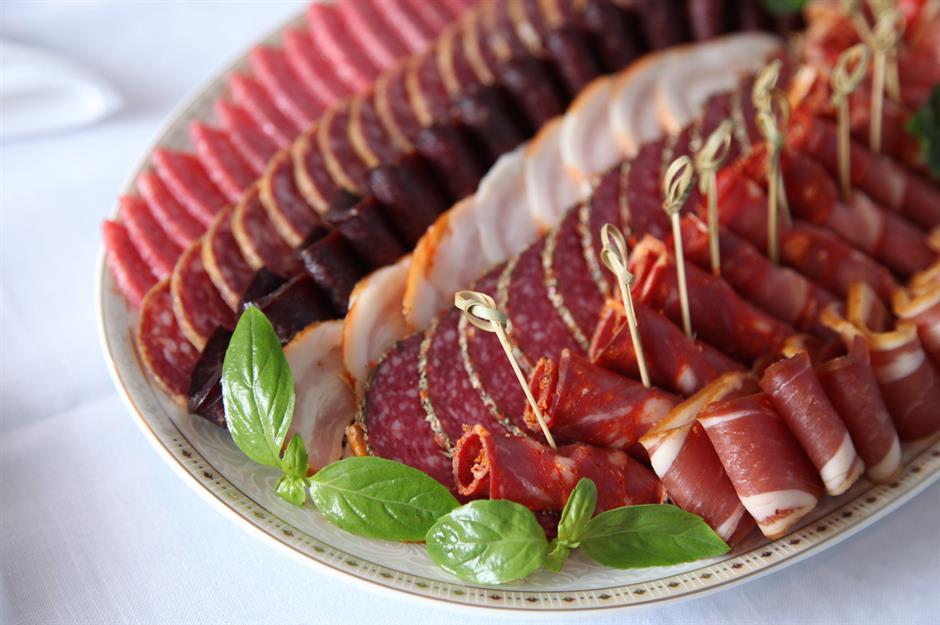
The royals would dine together again at lunchtime, with tradition being that the women join the men post-shoot in a smaller property on the Sandringham estate. According to Darren McGrady, the order of the day was comforting, warming food with dishes such as beef bourguignon likely to make an appearance. In 2018, a source told the Daily Mail, Princess Catherine and The Duchess of Sussex joined Princes Harry and William and others at Sandringham's Wood Farm to enjoy a lunch of cold cuts, sausages, salads and soups.
The last supper
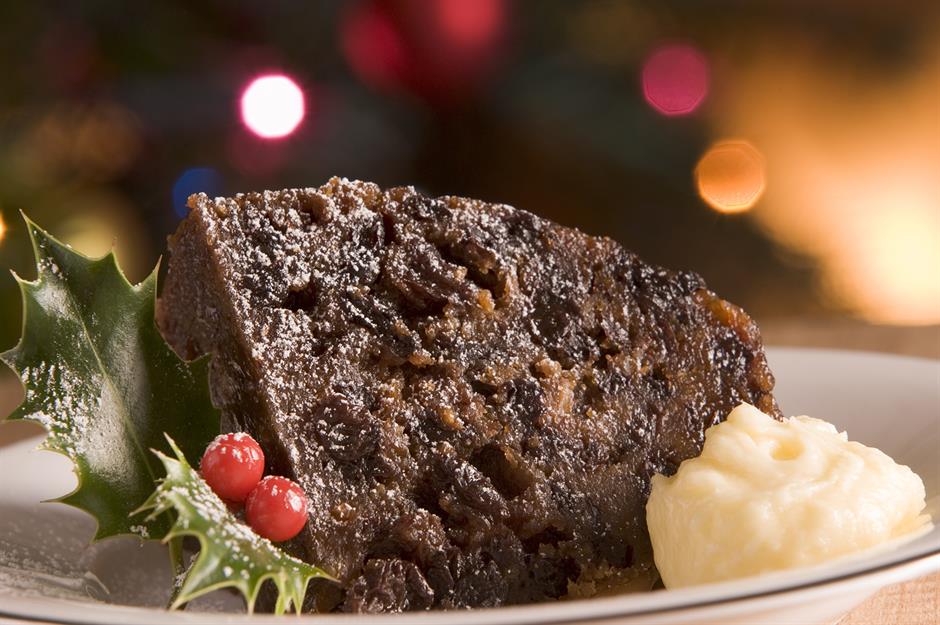
Come evening, game was on the menu. A popular choice was venison paired with dauphinoise potatoes and plenty of vegetables. The royal family also indulged in their sweets on Boxing Day. Traditional desserts included fried slices of Christmas pudding from the day before, or something chocolatey. Queen Elizabeth's Boxing Day favourite was a chocolate marquise – a soft, rich French terrine best drizzled with cream and served with fresh fruit.
Make sure you're ready for Christmas with our turkey timeline
Comments
Be the first to comment
Do you want to comment on this article? You need to be signed in for this feature